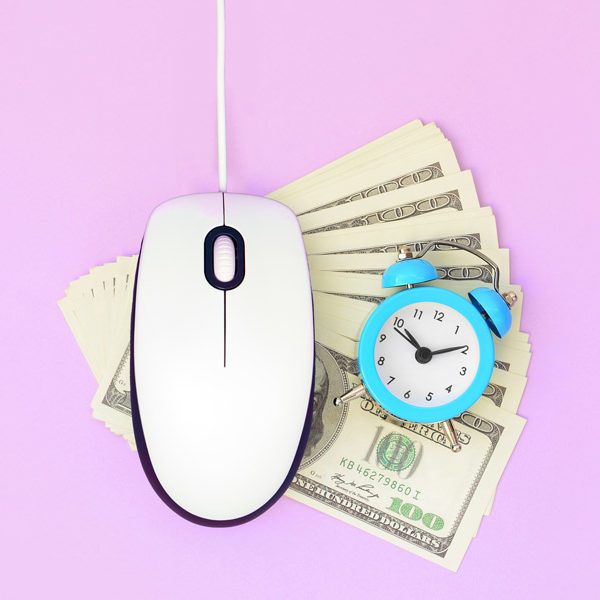3 Ways You Can Win At PPC in 2020

2020 has thrown us more curveballs than we could ever swing at. A global pandemic forced thousands of people out of work. Businesses closed their doors during a quarantine. Many shoppers transitioned away from brick-and-mortar locations and relied on online retailers. The list goes on and on.
We can say the in the PPC advertising world. Many changes this year have already fundamentally changed how we advertise in the major search engines. Accelerated delivery was removed as an option for daily budgets. Call-only ads were given an optional “visit website” link. Google provided advertising credits to advertisers impacted by the coronavirus. Google Shopping began showing unpaid results beneath the paid advertising listings.
Dozens of other updates have been released by Google and Microsoft alike. With all of these changes, if you haven’t changed how you are managing PPC your campaigns, you are likely falling behind your competitors.
If you can focus on the following, you will be well on your way to improving your results and maximizing your campaigns.
1. Smart Campaigns
Smart campaigns have been around in Google PPC since 2018, starting with Google Search and Display, with Smart Shopping campaigns debuting in 2019. Before the launch of Smart campaigns in 2018, AdWords Express essentially did the same thing; Google provided advertisers a simplified campaign option to create ads, identify audiences and keywords, and maximize delivery across a variety of Google channels. AdWords Express was then absorbed into the main Google ad platform, and we saw the birth of smart campaigns.
So what’s new in 2020? Well, they are starting to work. In 2018, a robust campaign created with hundreds of keywords and dozens of layered bid adjustments would absolutely outperform the average Smart campaign. 2019 wasn’t much different in terms of search and display, but shopping results went through the roof with the introduction of Smart Shopping campaigns.
This year, even though a well-managed campaign will still perform better, it seems as though enough algorithm updates have lead search and display campaigns in the same direction as Smart Shopping. If you find yourself in the position where you don’t have enough time to manage the campaign yourself, and you can’t afford to hire an agency to do a better a job, give Smart campaigns a shot. They will certainly do better than a traditional mismanaged campaign.
2. Bid Strategy Changes
One thing that has always been true in Google PPC is that Google will always find a way to spend your money. It’s not always in the most efficient way, however.
Choosing the right bidding strategy is paramount for any successful PPC campaign, but the “right” strategy is subjective. Even if your goal is to maximize revenue, choosing the Maximize Conversion Value bid strategy might not earn you the best results. More often than not, putting a target ROAS in place, or even switching to Maximize Clicks with a maximum CPC, will earn more revenue.
One explanation for this is competition. When you increase your budget, for example, Google instinctively sees this as an attempt to be more competitive in the marketplace. We often see CPC rise at the same time, regardless of the bid strategy, as Google attempts to gain more impression share with the larger budget. In cases like this, you may find yourself spending more, but getting fewer clicks, and subsequently fewer conversions.
In all situations, the best bid model for you will likely change over time. Whether you want more clicks, conversions, or a better ROI, you will need to experiment with your bids and see what works best for you. We no longer live in the days of “set it and forget it”. The best advertisers adapt to change and react to the statistically-significant data.
3. Ad Customization
We used to think we could indicate ad copy success by looking at the click-through rate (CTR) of it. That is still absolutely true, as long as the only metric you care about is CTR. In most cases, you are likely to care more about conversions, transactions, or phone calls. In those cases, you need to hold the ad copy just as accountable for performance as you would your keywords and your landing pages.
Customizing your ad, and optimizing for performance, doesn’t have to be some complicated process. It goes back to the basics of Quality Score; if your keywords match your ad copy, and your ad copy matches your landing page, you will be creating a better user experience. The customization could be as simple as using Dynamic Search Ads to input the searchers query directly into the ad itself.
If you have a promotion running, you can use the countdown feature to show that the promotion ends in X amount of days.
On the sophisticated side of the conversion, you can use Ad Customizers to help better adapt the ad copy to the individual viewing the ad, at the time of the auction. This option is highly scalable, hyper-tailored to each search or webpage. And it can work with any customizations you can think of.
No matter what approach you decide to take, customizing your ads is a key feature to help improve conversions on your site and create a better experience for your potential customers.
Win At PPC In 2020
The three topics we mentioned above will surely help you take your Google Ad account to the next level, but please don’t forget about the basics. PPC 101 advice like adding negative keywords, using calls-to-action in ad copy, focusing your ad spend on the top-performing days of the week, and a thousand other best practices should also continue being followed.
If you can mix and match the PPC basics with some of the advanced techniques, you will be well on your way to PPC success in 2020.

